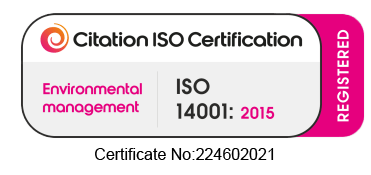In today’s hyper-connected digital landscape, where customer expectations are at an all-time high, mastering the art of customer experience (CX) is not just a competitive edge but a necessity for business survival. As we stride into the 4th platform era, where technology intertwines with every aspect of our lives, the axiom “you can’t manage what you don’t measure” holds more weight than ever, particularly in the realm of Customer.Experience Measurement.
The information for this blog was sourced using callcentrehelper.com. You can read the full story here
At the heart of CX lies a multi-faceted landscape, where every interaction between a customer and a brand shapes perception. Whether it’s a seamless online transaction, a personalised email, or a swift resolution to a query, each touchpoint contributes to the overall customer journey. However, deciphering this complex web of interactions can be daunting for businesses aiming to cultivate an accurate understanding of their CX performance.
Yet, those who crack the code on measuring customer experience unlock a treasure trove of insights that can be leveraged to transform their organisation into a beacon of customer-centricity. By harnessing the power of smart CX analytics tools, businesses can dissect vast amounts of data from myriad sources, gaining invaluable insights into customer behaviour, satisfaction levels, and journey pain points.
Is measuring Customer Experience important?
But why is measuring CX so imperative in the first place? The answer lies in its profound impact on business outcomes. A robust CX strategy not only fosters customer loyalty and retention but also drives financial success and bolsters brand reputation. Studies have shown that businesses excelling in CX outperform their counterparts, enjoying increased revenues, profitability, and shareholder returns.
What are the key metrics of Customer Experience Measurement?
So, what are the key metrics that businesses should focus on when measuring CX? While there’s no one-size-fits-all approach, a basketful of measurements collectively paints a holistic picture of CX performance. From Net Promoter Score (NPS) and Customer Satisfaction (CSAT) to Customer Effort Score (CES) and Customer Retention rates, each metric offers unique insights into different facets of the customer journey.
However, measuring CX is not just about crunching numbers; it’s about driving actionable insights that fuel continuous improvement. By following a structured approach—from data collection and analysis to prioritizing improvement areas and implementing changes—businesses can embark on a journey of CX innovation that transcends conventional boundaries.
What is the future of CX?
In the 4th Platform era, technology emerges as a potent ally in the quest for superior CX. Advanced tools powered by artificial intelligence (AI) enable businesses to glean real-time insights, predict customer behaviour, and personalise experiences at scale. From feedback management and interaction analytics to social media monitoring and customer journey mapping, the arsenal of CX measurement tools has never been more robust.
As we gaze into the future, the role of AI in CX measurement is poised to become even more pervasive. Predictive analytics will empower businesses to anticipate customer needs and trends, while hyper-personalisation will redefine how brands engage with their audience. Yet, amidst this technological evolution, one thing remains constant: the paramount importance of prioritising CX as a strategic imperative.
In 2025, sustainability is more than a buzzword, for UK organisations, it’s becoming integral to brand reputation, regulation, and cost control. And one of
In just 15 days, Microsoft will begin its formal switch to Windows 11 for eligible devices. Whether you’re managing a team of employees, running
The UK’s traditional phone network, the Public Switched Telephone Network (PSTN Switch-Off), is being retired. By January 2027, it will be permanently switched off.
Ransomware remains the UK’s most serious cyber threat. In July 2025, the Home Office set out proposals to ban ransom payments for public-sector bodies
The UK’s data protection rules are changing again Post-Brexit. With the Data (Use and Access) Act 2025 (DUAA) now law, businesses face new obligations
Why Now? Windows 10 is approaching End of Life Microsoft will retire Windows 10 on 14 October 2025, ending free security and feature updates. The
Why should technology leaders care about energy legislation? The UK’s journey toward energy independence and net zero is now inseparable from the nation’s digital
In July 2025, the UK government unveiled a ground-breaking package of measures aimed at disrupting the ransomware economy and protecting vital services. These moves
For all businesses, agility and innovation are essential for staying competitive. But what happens when employees act faster than your IT policy can keep
Artificial Intelligence (AI) is transforming industries by improving efficiency and decision-making. However, cybercriminals are also harnessing AI to create more sophisticated and targeted cyber
In 2025, sustainability is more than a buzzword, for UK organisations, it’s becoming integral to brand reputation, regulation, and cost control. And one of
In just 15 days, Microsoft will begin its formal switch to Windows 11 for eligible devices. Whether you’re managing a team of employees, running
The UK’s traditional phone network, the Public Switched Telephone Network (PSTN Switch-Off), is being retired. By January 2027, it will be permanently switched off.
Ransomware remains the UK’s most serious cyber threat. In July 2025, the Home Office set out proposals to ban ransom payments for public-sector bodies
The UK’s data protection rules are changing again Post-Brexit. With the Data (Use and Access) Act 2025 (DUAA) now law, businesses face new obligations
Why Now? Windows 10 is approaching End of Life Microsoft will retire Windows 10 on 14 October 2025, ending free security and feature updates. The
Why should technology leaders care about energy legislation? The UK’s journey toward energy independence and net zero is now inseparable from the nation’s digital
In July 2025, the UK government unveiled a ground-breaking package of measures aimed at disrupting the ransomware economy and protecting vital services. These moves
For all businesses, agility and innovation are essential for staying competitive. But what happens when employees act faster than your IT policy can keep
Artificial Intelligence (AI) is transforming industries by improving efficiency and decision-making. However, cybercriminals are also harnessing AI to create more sophisticated and targeted cyber


















